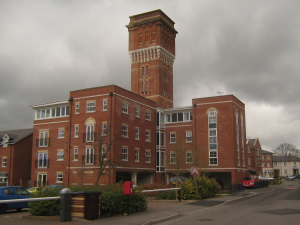The Victorian era was a time of enormous industrial change and social progress. However, one area where it fell short was in mental health. Even modern society still has a way to go when offering support for mental illness, but at least institutions like the East Kent Lunatic Asylum are a thing of the past.
Asylums are a staple trope of horror fiction, normally included to terrify and unsettle the neurotypical able-bodied viewer, but historically the real horror of the asylum lies in the experience of its inmates. The East Kent Lunatic Asylum was founded in 1872 after local authorities realised that the influx of mental health patients was too great for Kent County Asylum in Maidstone. The new site was on Chartham Downs, chosen for its space and its seclusion, and would grow over the years to eventually include a bakery, a farm, workshops, a butcher, a church and graveyard, and more.
In 1920, the Asylum was taken over by the Kent County Mental Hospitals Committee and renamed Kent County Mental Hospital; and when the NHS was formed in 1948, it was renamed again to St Augustine’s Hospital. The various name changes over the decades are an interesting side-effect of social progress, but despite these rebrands, the hospital’s internal workings told a different story.
In April 1974, two staff members at St Augustine’s wrote a statement titled “A Critique Regarding Policy” where they criticised the poor standards of care that long-term patients received at the hospital. They distributed it in the hospital and sent copies to the Secretary of State and various health authorities, but their claims were dismissed.
Enraged, the same staff members released another statement the following year titled “Part II: The Evidence” detailing multiple instances of abusive behaviour from the nursing staff, describing how patients were over-medicated, insulted, and deprived of their rights. The statement made headlines, and a subsequent enquiry revealed that these conditions were not limited to St Augustine’s, but many other mental hospitals were run in a similar fashion. St Augustine’s eventually closed in 1993. The majority of the hospital buildings were demolished, and the site is now a housing estate.
It’s easy to point to asylums and pat ourselves on the back for our more progressive attitudes, but when it comes to stable support systems for mental health issues, we still have a long way to go. We may not keep the mentally ill locked away in straitjackets anymore, but understanding mental illness as something that affects people every single day is something we still need to work on.



